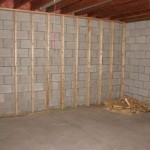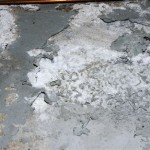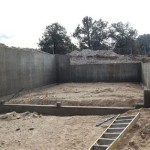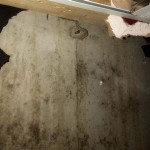How to Fill Cracks in a Basement Wall
Cracks in basement walls are a common problem for homeowners. These cracks can be caused by a variety of factors, including settling, moisture, and even tree roots. While small cracks may not be a cause for concern, larger cracks can indicate a more serious problem that needs to be addressed. Filling cracks in basement walls can help prevent further damage and protect your home from moisture intrusion. This process requires careful preparation, appropriate materials, and proper execution to ensure long-term success.
Assessing the Crack
Before you begin filling a crack in your basement wall, it is crucial to understand its nature and severity. Cracks can be categorized as:
- Hairline Cracks: These are thin, barely visible cracks that are often caused by minor settling. They typically pose no structural threat and can be easily addressed.
- Larger Cracks: These cracks are wider and more pronounced, and may indicate more significant movement or structural issues. They require careful evaluation to determine the underlying cause and appropriate repair methods.
- Active Cracks: These cracks are actively widening or shifting, which may indicate a more serious structural problem. If you notice an active crack, it is essential to consult with a professional to determine the best course of action.
Once you have assessed the crack, you can determine the appropriate repair method. For hairline cracks, a simple sealant may be sufficient. Larger cracks may require more involved repairs, such as using a crack injection system or applying a concrete patch.
Preparing the Crack
Before you begin filling the crack, it is essential to prepare the area properly. This involves cleaning the crack and surrounding area, and creating a smooth surface for the sealant or patching material to adhere to. Here's a step-by-step guide:
- Clean the Crack: Use a wire brush or a vacuum cleaner with a crevice attachment to remove any loose debris or dirt from the crack.
- Widen the Crack: If the crack is narrow, you may need to widen it slightly to allow for better adhesion of the sealant or patching material. Use a utility knife or chisel to carefully widen the crack.
- Dampen the Crack: Before applying sealant or patching material, dampen the crack with a damp cloth or sponge. This will help the material adhere better to the concrete.
Proper preparation is crucial to ensuring a successful repair. Ensuring the crack is clean and free of debris, and creating a surface conducive to adhesion will help the repair last longer.
Filling the Crack
Once the crack is prepared, you can begin filling it with the appropriate material. The choice of material will depend on the size and nature of the crack. Common options include:
- Caulk: This is a good option for hairline cracks. Choose a high-quality, flexible caulk that is specifically designed for concrete.
- Acrylic Latex Caulk: Offers flexibility and adhesion for both interior and exterior applications. It's a good choice for sealing cracks that may still move slightly.
- Epoxy Caulk: A strong, durable sealant that can be used for filling larger cracks. This type of caulk offers excellent adhesion and resistance to moisture.
- Concrete Patch: For larger cracks or holes, a concrete patch is often the best option. Pre-mixed concrete patching compound is readily available from most hardware stores and home improvement centers.
Follow the manufacturer's instructions for applying the chosen material. Make sure to smooth the material out to create a seamless finish. Allow the material to cure completely before painting over it or applying other finishes.
Additional Considerations
While filling cracks can help address visible issues, it is important to consider the underlying causes. If the crack is a result of structural movement, filling alone may not solve the problem. In such cases, consulting a structural engineer is recommended to determine the appropriate course of action.
Furthermore, regular inspection and maintenance are crucial. Even after filling a crack, it is important to monitor the area for any signs of further movement. This proactive approach can help identify problems early and prevent further damage.
Remember, tackling a crack in your basement wall requires appropriate preparation, the right material, and careful execution. While smaller cracks can be easily addressed, larger ones may require professional expertise. By understanding the steps involved and seeking assistance when needed, you can effectively manage these issues and ensure the longevity of your basement.

How To Repair A Large Basement Wall Crack Stop Leaking Permanently

How To Repair A Large Basement Wall Crack Stop Leaking Permanently

How To Repair A Foundation The Crack Iection Method West Allis Wi Accurate Basement

Diy Repairs Should You Fix That Crack In Your Basement Wall Yourself News And Events For Homespec Waterproofing Foundation Repair

Easy Peel Diy Crack Repair Kit Urethane Radonseal

Basement Wall Crack Repair Specialist Call 855 554 7246

Diy Foundation Crack Repair Kit Radonseal

Foundation Crack Repair Basement Wall Floor Leak Fix Maine Crackx

Foundation Repair Repairing Wall Cracks

Repair Solutions For Foundation Wall Cracks In Cleveland
Related Posts







